 |
Golden currant, Ribes aureum Pursh
(left, right). The golden currant grows in all but our
southeastern states. It is identified by its yellow flowers, three-lobed
leaves, and tasty berries. The berries are usually yellow to orange in color,
but at times are red or even black. While all Ribes are to a degree edible,
the golden currant is the sweetest. The shrubs are attractive and should
make a good ornamental, although they seem seldom to be used for that
purpose. The Lewis and Clark expedition first collected the plant near
the Three Forks of the Missouri on July 29, 1805, and again the following
spring near today’s The Dalles on the Columbia River (April 16,
1805). |
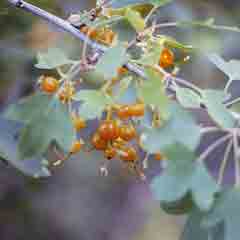 |
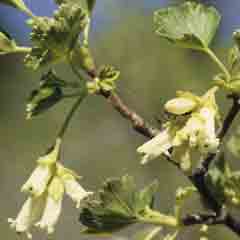 |
Squawberry, Ribes cereum Douglas
(left, right). The squawberry, or wax currant (the latter
is considered pc), grows as high as treeline in our western states, and east
to South Dakota and Oklahoma. Its creamy-white flowers are about half an
inch long, and its translucent berries are edible, but tasteless. Indians
used the fruit for pemmican, hence the plant’s common name. David Douglas
was the first to collect this species along the Columbia River in 1825. The
name cereum means “waxy” for the berries’ appearance. |
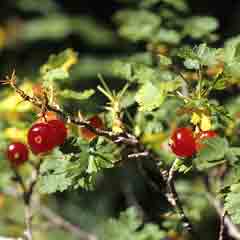 |
 |
Swamp Black Gooseberry, Ribes lacustre
(Pers.) Poir. (left, right). The prickly wild
gooseberrry is another easily identified Ribes. It grows in moist places
and on streambanks. The small, filmy flowers and shiny leaves are distinctive.
Its stems are prickly. The plants black fruit may also have soft
prickles, unlike those of other wild currants. The berries are edible
but sour—only suitable as an emergency food. |
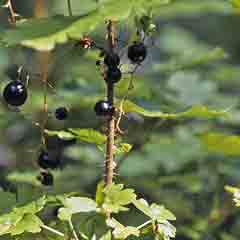 |
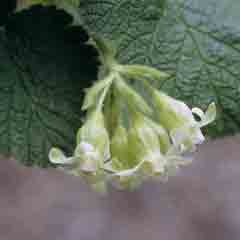 |
Sticky currant,
Ribes viscosissimum Pursh
(left). Touch this plant’s foliage and you will see
how it got its names. Meriwether Lewis collected the plant—unknown then
to science—on June 16, 1806, on the Lolo Trail while eastward bound,
noting that it grew on “The hights of the rocky mountain...Fruit indifferent
and gummy...” The plant is common in our western states and adjacent
Canadian provinces. The sticky black fruit is somewhat larger
than those of other wild currants.
|
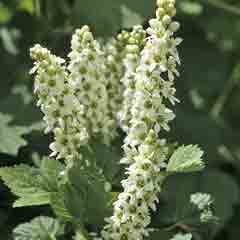 |
Hudson’s Bay currant, Ribes
hudsonianum Richards.
(left, right). The Hudson’s Bay currant (also northern
black currant) is a montane to subalpine streamside plant, that grows all
across northern North America. The shrubs bear sprays of white flowers that
ripen into black fruit. Maple-like leaves give off an acrid odor similar
to that of cat urine, explaining another common name, “stinking
currant.” Despite this, the berries are reasonably palatable. Two varieties
occur in Idaho; ours is var. petiolare (Dougl.) Jancz.; the other, var.
hudsonianum, grows near the Canadian border. |
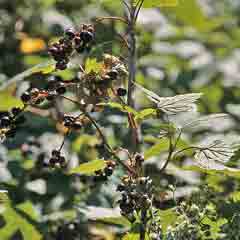 |
 |
Henderson’s gooseberry, Ribes
oxyacanthoides L. var. hendersonii (C. L. Hitchc.) P. K. Holmgren
(left, right). Henderson’s gooseberry is an
alpine plant that grows in Idaho’s Lost River Range (where this plant
was photographed), and in Montana’s Anaconda, and Nevada’s Toiyabe
mountain ranges. Although it lacks small branch prickles, it is armed with
impressively long thorns. We have not seen a fruiting plant. Several other
varieties of Ribes oxyacanthoides are recognized; these occur at lower
elevations. The species as a whole is found from Alaska to Hudson’s
Bay, south to the Great Lakes and northern Great Plains. Louis Fourniquet
Henderson (1853-1942), for whom this variety was named, was Professor of
Botany at the University of Idaho and, subsequently, at the University of
Oregon, during the first half of the twentieth century. |
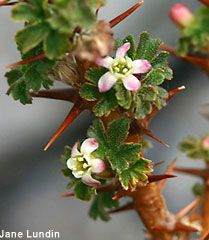 |










